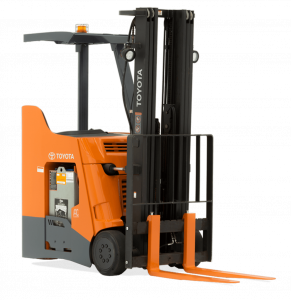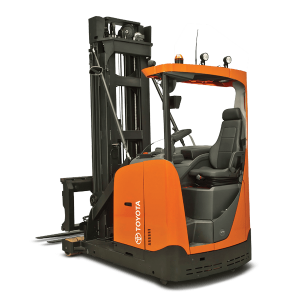Understanding Forklift Classes
If you are new to forklifts and are shopping for your first very model then you may have already browsed some websites or even visited a retailer, only to be overwhelmed when you got there because the salesperson is tossing out fancy terms like ‘Class I: Rider Forklift’ and ‘Class II Electric Lift Truck’. What defines a Class I forklift and how is it different from a Class II forklift?
There are seven classes of forklifts altogether, and while you might find the number of classifications too broad and extensive, there is a reason for all the lift codes. Consequently, the article is intended to teach you about the different forklift classes so when you go to buy a new or used forklift, you’ll understand exactly what the salesperson means when he says ‘Class IV Internal Combustion Truck’. Furthermore, you can communicate on the same level and inform the retailer of your needs and what exactly you need.
Class I: Electric Powered Rider Forklifts

Image courtesy of Toyota Forklift – Bahrns ToyotaLift is an award-winning Toyota Forklift Dealership
Class I forklifts are all front loading and counterbalanced. Additionally, these types of forklifts are known as ‘rider’ trucks which carry the operator inside the vehicle, either seated or standing. Class I forklifts are sold standard with parallel forks and are considered the most common forklift truck.
Lift codes include:
• Counterbalanced Rider, Stand Up
• 3 Wheel Electric, Sit Down
• Counterbalanced Rider, Sit Down, Cushion Tires
• Counterbalanced Rider, Sit Down, Pneumatic or Cushion
Class II: Electric Powered Narrow Aisle Lift Trucks

Image courtesy of Toyota Forklift – Bahrns ToyotaLift is an award-winning Toyota Forklift Dealership
Class II electric lift trucks are designed for use in narrow spaces. The eight different lift truck codes that apply to Class II lift trucks include:
• High Lift Straddle (outriggers straddle the forks)
• Order Selector/Picker (lifts a personnel carrier)
• Reach Truck Outrigger (forks have horizontal as well as vertical reach)
• Side Load Platform (forks placed between two balancing platforms)
• Side Load High Lift Pallets (forks extend to the side of the forklift and retract back to a centered, balanced position)
• Turret Trucks (wider truck bodies, mast and carriage on a separate “turret”)
• Low Lift Platform (walk behind “walkie” lift truck with platform instead of forks)
• Low Lift Pallet (walk behind with forks)
Class III: Electric Powered Hand Trucks or Hand/Rider Trucks
Class III lift trucks are either walk behind, otherwise referred to as walkies, or have a platform for the operator to stand on. Lift codes include:
• Low Lift Platform
• Low Lift Walkie Platform
• Tractors (designed for transporting attachments)
• Low Lift Walkie/Center Control
• Reach Type Outrigger
• High Lift Straddle
• Single Face Pallet (“face” is a protective metal grid)
• High Lift Platform (with outriggers)
• High Lift Counterbalanced
• Low Lift Walkie/Rider Pallet and End Control
Class IV: Internal Combustion Lift Trucks
Class IV lift trucks may use any of the various fuels associated with internal combustion motors. Like Class I forklifts, Class IV are typically counterbalanced and front-loading forklifts with cushioned tires.
Class V: Internal Combustion Lift Trucks
Class V Internal Combustion lift trucks are nearly identical to Class IV lift trucks. The only difference? Class V has pneumatic tires as opposed to cushioned tires of Class IV trucks.
Class VI: Electric and Internal Combustion Engine Tractors
Class VI trucks represent more of a tractor than a forklift. The tractors have drawbars instead of forks with a drawbar pull that exceeds 999 lbs.
Class VII: Rough Terrain Forklift Trucks
As the name implies, rough terrain forklifts are designed to ride over uneven, rough, and sloping terrain. It is accomplished with not only a heavy-duty, durable frame but also pneumatic tires. However, do not let the name completely fool you because Class VII trucks are still not considered ‘all terrain’ vehicles. Class VII forklift trucks have a separate list of lift codes different from any of the other classifications.

